Unofficial AirPlay Protocol Specification
1. Introduction2. Service Discovery
2.1. AirTunes service2.2. AirPlay Service 3. Photos
3.1. HTTP requests3.2. Events3.3. Photo Caching3.4. Slideshows 4. Video
4.1. HTTP requests4.2. Events 5. Audio
5.1. RTSP requests5.2. RTP Streams5.3. Volume Control5.4. Metadata5.5. AirPort Express Authentication5.6. Remote Control 6. Screen Mirroring
6.1. HTTP requests6.2. Stream Packets6.3. Time Synchronization 7. Password Protection8. History9. Resources
9.1. IETF RFCs9.2. IETF drafts9.3. Apple Protocols
1. Introduction
AirPlay is a family of protocols implemented by Apple to view various types of media content on the Apple TV from any iOS device or iTunes. In this documentation, “iOS device” refers to an iPhone, iPod touch or iPad. The following scenarios are supported by AirPlay:
Display photos and slideshows from an iOS device. Stream audio from an iOS device or iTunes. Display videos from an iOS device or iTunes. Show the screen content from an iOS device or OS X Mountain Lion. This is called AirPlay Mirroring. It requires hardware capable of encoding live video without taking too much CPU, so it is only available on iPhone 4S, iPad 2, the new iPad, and Macs with Sandy Bridge CPUs.
Audio streaming is also supported from an iOS device or iTunes to an AirPort Express base station or a 3rd party AirPlay-enabled audio device. Initially this was called AirTunes, but it was later renamed to AirPlay when Apple added video support for the Apple TV.
This document describes these protocols, as implemented in Apple TV software version 5.0, iOS 5.1 and iTunes 10.6. They are based on well-known standard networking protocols such as Multicast DNS, HTTP, RTSP, RTP or NTP, with custom extensions.
All these information have been gathered by using various techniques of reverse engineering, so they might be somewhat inaccurate and incomplete. Moreover, this document does not explain how to circumvent any kind of security implemented by Apple:
It does not give any RSA keys. It does not explain how to decode iTunes videos protected with the FairPlay DRM. It does not explain the FairPlay authentication (SAPv2.5) used by iOS devices and OS X Mountain Lion to protect audio and screen content.
Please don’t e-mail me about this, I won’t reply. In fact, none of this is actually required to be able to view media content on Apple TV.
2. Service Discovery
AirPlay does not require any configuration to be able to find compatible devices on the network, thanks to DNS-based service discovery, based on multicast DNS, aka Bonjour.
An AirPlay device such as the Apple TV publishes two services. The first one is RAOP (Remote Audio Output Protocol), used for audio streaming, and the other one is the AirPlay service, for photo and video content.
2.1. AirTunes service
RAOP service from Apple TV
name: 5855CA1AE288@Apple TV
type: _raop._tcp
port: 49152
txt:
txtvers=1
ch=2
cn=0,1,2,3
da=true
et=0,3,5
md=0,1,2
pw=false
sv=false
sr=44100
ss=16
tp=UDP
vn=65537
vs=130.14
am=AppleTV2,1
sf=0x4
The name is formed using the MAC address of the device and the name of the remote speaker which will be shown by the clients.
The following fields appear in the TXT record:
| name |
value |
description |
txtvers |
1 |
TXT record version 1 |
ch |
2 |
audio channels: stereo |
cn |
0,1,2,3 |
audio codecs |
et |
0,3,5 |
supported encryption types |
md |
0,1,2 |
supported metadata types |
pw |
false |
does the speaker require a password? |
sr |
44100 |
audio sample rate: 44100 Hz |
ss |
16 |
audio sample size: 16-bit |
tp |
UDP |
supported transport: TCP or UDP |
vs |
130.14 |
server version 130.14 |
am |
AppleTV2,1 |
device model |
Audio codecs
| cn |
description |
| 0 |
PCM |
| 1 |
Apple Lossless (ALAC) |
| 2 |
AAC |
| 3 |
AAC ELD (Enhanced Low Delay) |
Encryption Types
| et |
description |
| 0 |
no encryption |
| 1 |
RSA (AirPort Express) |
| 3 |
FairPlay |
| 4 |
MFiSAP (3rd-party devices) |
| 5 |
FairPlay SAPv2.5 |
Metadata Types
| md |
description |
| 0 |
text |
| 1 |
artwork |
| 2 |
progress |
2.2. AirPlay Service
AirPlay service
name: Apple TV
type: _airplay._tcp
port: 7000
txt:
deviceid=58:55:CA:1A:E2:88
features=0x39f7
model=AppleTV2,1
srcvers=130.14
The following fields are available in the TXT record:
| name |
value |
description |
model |
AppleTV2,1 |
device model |
deviceid |
58:55:CA:1A:E2:88 |
MAC address of the device |
features |
0x39f7 |
bitfield of supported features |
pw |
1 |
server is password protected |
The pw field appears only if the AirPlay server is password protected. Otherwise it is not included in the TXT record.
The features bitfield allows the following features to be defined:
| bit |
name |
description |
| 0 |
Video |
video supported |
| 1 |
Photo |
photo supported |
| 2 |
VideoFairPlay |
video protected with FairPlay DRM |
| 3 |
VideoVolumeControl |
volume control supported for videos |
| 4 |
VideoHTTPLiveStreams |
http live streaming supported |
| 5 |
Slideshow |
slideshow supported |
| 7 |
Screen |
mirroring supported |
| 8 |
ScreenRotate |
screen rotation supported |
| 9 |
Audio |
audio supported |
| 11 |
AudioRedundant |
audio packet redundancy supported |
| 12 |
FPSAPv2pt5_AES_GCM |
FairPlay secure auth supported |
| 13 |
PhotoCaching |
photo preloading supported |
Note that the Apple TV does not support VideoVolumeControl. It has probably been introduced for the upcoming Apple television.
The AirPlay server is a HTTP server (RFC 2616). Two connections are made to this server, the second one being used as a reverse HTTP connection. This allows a client to receive asynchronous events, such as playback status changes, from a server.
All HTTP requests share some common headers:
| name |
value |
description |
X-Apple-Session-ID |
1bd6ceeb… |
UUID for the session |
X-Apple-Device-ID |
0xdc2b61a0ce79 |
MAC address |
The reverse connection looks like this:
client → server
POST /reverse
Upgrade: PTTH/1.0
Connection: Upgrade
X-Apple-Purpose: event
Content-Length: 0
User-Agent: MediaControl/1.0
X-Apple-Session-ID: 1bd6ceeb-fffd-456c-a09c-996053a7a08c
server → client
HTTP/1.1 101 Switching Protocols
Date: Thu, 23 Feb 2012 17:33:41 GMT
Upgrade: PTTH/1.0
Connection: Upgrade
The X-Apple-Purpose header makes it clear that this connection is used for sending events to the client, whereas X-Apple-Session-ID is used to link this connection to the other (non-reverse) one. Events are delivered using a POST request for sending an XML property list to the /event location.
3. Photos
Photos are JPEG data transmitted using a PUT request to the AirPlay server. They can be displayed immediately, or cached for future use.
3.1. HTTP requests
GET /slideshow-features
A client can fetch the list of available transitions for slideshows. Then it can let the user pick one, before starting a slideshow. The Accept-Language header is used to specify in which language the transition names should be.
client → server
GET /slideshow-features HTTP/1.1
Accept-Language: English
Content-Length: 0
User-Agent: MediaControl/1.0
X-Apple-Session-ID: cdda804c-33ae-4a0b-a5f2-f0e532fd5abd
server → client
HTTP/1.1 200 OK
Date: Thu, 23 Feb 2012 17:33:41 GMT
Content-Type: text/x-apple-plist+xml
Content-Length: 6411
<?xml version="1.0" encoding="UTF-8"?>
<!DOCTYPE plist PUBLIC "-//Apple//DTD PLIST 1.0//EN"
"http://www.apple.com/DTDs/PropertyList-1.0.dtd">
<plist version="1.0">
<dict>
<key>themes</key>
<array>
<dict>
<key>key</key>
<string>Reflections</string>
<key>name</key>
<string>Reflections</string>
</dict>
...
</array>
</dict>
</plist>
PUT /photo
Send a JPEG picture to the server. The following headers are supported:
| name |
description |
X-Apple-AssetKey |
UUID for the picture |
X-Apple-Transition |
transition that should be used to show the picture |
X-Apple-AssetAction |
specify a caching operation |
Example 1: show a picture without any transition (for the first time)
client → server
PUT /photo HTTP/1.1
X-Apple-AssetKey: F92F9B91-954E-4D63-BB9A-EEC771ADE6E8
Content-Length: 462848
User-Agent: MediaControl/1.0
X-Apple-Session-ID: 1bd6ceeb-fffd-456c-a09c-996053a7a08c
<JPEG DATA>
server → client
HTTP/1.1 200 OK
Date: Thu, 23 Feb 2012 17:33:42 GMT
Content-Length: 0
Example 2: show a picture using the dissolve transition
client → server
PUT /photo HTTP/1.1
X-Apple-AssetKey: F92F9B91-954E-4D63-BB9A-EEC771ADE6E8
X-Apple-Transition: Dissolve
Content-Length: 462848
User-Agent: MediaControl/1.0
X-Apple-Session-ID: 1bd6ceeb-fffd-456c-a09c-996053a7a08c
<JPEG DATA>
server → client
HTTP/1.1 200 OK
Date: Thu, 23 Feb 2012 17:33:42 GMT
Content-Length: 0
PUT /slideshows/1
Start or stop a slideshow session. When starting, slideshow settings such as the slide duration and selected transition theme are transmitted. The following parameters are sent in an XML property list:
| key |
type |
description |
| settings. slideDuration |
integer |
slide duration in seconds |
| settings. theme |
string |
selected transition theme |
| state |
string |
playing or stopped |
Example: send slideshow settings
client → server
PUT /slideshows/1 HTTP/1.1
Content-Type: text/x-apple-plist+xml
Content-Length: 366
User-Agent: MediaControl/1.0
X-Apple-Session-ID: 98a7b246-8e00-49a6-8765-db57165f5b67
<?xml version="1.0" encoding="UTF-8"?>
<!DOCTYPE plist PUBLIC "-//Apple//DTD PLIST 1.0//EN"
"http://www.apple.com/DTDs/PropertyList-1.0.dtd">
<plist version="1.0">
<dict>
<key>settings</key>
<dict>
<key>slideDuration</key>
<integer>3</integer>
<key>theme</key>
<string>Classic</string>
</dict>
<key>state</key>
<string>playing</string>
</dict>
</plist>
server → client
HTTP/1.1 200 OK
Date: Thu, 08 Mar 2012 16:30:01 GMT
Content-Type: text/x-apple-plist+xml
Content-Length: 181
<?xml version="1.0" encoding="UTF-8"?>
<!DOCTYPE plist PUBLIC "-//Apple//DTD PLIST 1.0//EN"
"http://www.apple.com/DTDs/PropertyList-1.0.dtd">
<plist version="1.0">
<dict/>
</plist>
POST /stop
Stop a photo or slideshow session.
client → server
POST /stop HTTP/1.1
Content-Length: 0
User-Agent: MediaControl/1.0
X-Apple-Session-ID: 1bd6ceeb-fffd-456c-a09c-996053a7a08c
server → client
HTTP/1.1 200 OK
Date: Thu, 23 Feb 2012 17:33:55 GMT
Content-Length: 0
3.2. Events
Photo
This event notifies a client that a photo session has ended. Then the server can safely disconnect.
| key |
type |
description |
| category |
string |
photo |
| sessionID |
integer |
session ID |
| state |
string |
stopped |
Example: stop photo session
server → client
POST /event HTTP/1.1
Content-Type: text/x-apple-plist+xml
Content-Length: 277
X-Apple-Session-ID: 1bd6ceeb-fffd-456c-a09c-996053a7a08c
<?xml version="1.0" encoding="UTF-8"?>
<!DOCTYPE plist PUBLIC "-//Apple//DTD PLIST 1.0//EN"
"http://www.apple.com/DTDs/PropertyList-1.0.dtd">
<plist version="1.0">
<dict>
<key>category</key>
<string>photo</string>
<key>sessionID</key>
<integer>38</integer>
<key>state</key>
<string>stopped</string>
</dict>
</plist>
client → server
HTTP/1.1 200 OK
Content-Length: 0
Slideshow
Slideshow events are used to notify the server about the playback state.
| key |
type |
description |
| category |
string |
slideshow |
| lastAssetID |
integer |
last asset ID |
| sessionID |
integer |
session ID |
| state |
string |
loading, playing or stopped |
Example: slideshow is currently playing
server → client
POST /event HTTP/1.1
Content-Type: text/x-apple-plist+xml
Content-Length: 371
X-Apple-Session-ID: f1634b51-5cae-4384-ade5-54f4159a15f1
<?xml version="1.0" encoding="UTF-8"?>
<!DOCTYPE plist PUBLIC "-//Apple//DTD PLIST 1.0//EN"
"http://www.apple.com/DTDs/PropertyList-1.0.dtd">
<plist version="1.0">
<dict>
<key>category</key>
<string>slideshow</string>
<key>lastAssetID</key>
<integer>5</integer>
<key>sessionID</key>
<integer>4</integer>
<key>state</key>
<string>playing</string>
</dict>
</plist>
client → server
HTTP/1.1 200 OK
Content-Length: 0
3.3. Photo Caching
AirPlay supports preloading picture data to improve transition latency. This works by preloading a few pictures (most likely the ones before and after the current picture) just after displaying one.
Preloading is achieved using the cacheOnly asset action. Upon receiving this request, a server stores the picture in its cache. Later, a client can request the display of this picture using the displayCached asset action and the same asset key. This is much faster than a full picture upload because no additional data is transmitted.
When asked for a picture which is no longer in the cache, a server replies with an HTTP 412 error code (Precondition Failed).
Example 1: cache a picture for future display
client → server
PUT /photo HTTP/1.1
X-Apple-AssetAction: cacheOnly
X-Apple-AssetKey: B0DDE2C0-6FDD-48F8-9E5B-29CE0618DF5B
Content-Length: 462848
User-Agent: MediaControl/1.0
X-Apple-Session-ID: 1bd6ceeb-fffd-456c-a09c-996053a7a08c
<JPEG DATA>
server → client
HTTP/1.1 200 OK
Date: Thu, 23 Feb 2012 17:33:45 GMT
Content-Length: 0
Example 2: show a cached picture
client → server
PUT /photo HTTP/1.1
X-Apple-AssetAction: displayCached
X-Apple-AssetKey: B0DDE2C0-6FDD-48F8-9E5B-29CE0618DF5B
X-Apple-Transition: Dissolve
Content-Length: 0
User-Agent: MediaControl/1.0
X-Apple-Session-ID: 1bd6ceeb-fffd-456c-a09c-996053a7a08c
server → client
HTTP/1.1 200 OK
Date: Thu, 23 Feb 2012 17:33:45 GMT
Content-Length: 0
3.4. Slideshows
Slideshows are using the reverse HTTP connection for asynchronous loading of pictures. Three connections are performed in parallel. The X-Apple-Purpose header is set to slideshow. A GET request to the /slideshows/1/assets/1 location is issued to fetch a new picture from the AirPlay client. A binary property list with the following parameters is expected as reply:
| key |
type |
description |
| data |
data |
JPEG picture |
| info. id |
integer |
asset ID |
| info.key |
integer |
1 |
Example: fetch a new picture
server → client
GET /slideshows/1/assets/1 HTTP/1.1
Content-Length: 0
Accept: application/x-apple-binary-plist
X-Apple-Session-ID: 98a7b246-8e00-49a6-8765-db57165f5b67
client → server
HTTP/1.1 200 OK
Content-Type: application/x-apple-binary-plist
Content-Length: 58932
<BINARY PLIST DATA>
<?xml version="1.0" encoding="UTF-8"?>
<!DOCTYPE plist PUBLIC "-//Apple//DTD PLIST 1.0//EN"
"http://www.apple.com/DTDs/PropertyList-1.0.dtd">
<plist version="1.0">
<dict>
<key>data</key>
<data>
...
</data>
<key>info</key>
<dict>
<key>id</key>
<integer>1</integer>
<key>key</key>
<string>1</string>
</dict>
</dict>
</plist>
4. Video
In order to play a video on an AirPlay server, HTTP requests are used to send a video URL, perform scrubbing, change the playback rate and update the timeline.
4.1. HTTP requests
GET /server-info
Fetch general informations about the AirPlay server. These informations are returned as an XML property list, with the following properties:
| key |
type |
value |
description |
| deviceid |
string |
58:55:CA:1A:E2:88 |
MAC address |
| features |
integer |
14839 |
0x39f7 |
| model |
string |
AppleTV2,1 |
device model |
| protovers |
string |
1.0 |
protocol version |
| srcvers |
string |
120.2 |
server version |
The model, deviceid, srcvers and features properties are the same as broadcasted by the mDNS AirPlay service.
Example: fetch server informations
client → server
GET /server-info HTTP/1.1
X-Apple-Device-ID: 0xdc2b61a0ce79
Content-Length: 0
User-Agent: MediaControl/1.0
X-Apple-Session-ID: 1bd6ceeb-fffd-456c-a09c-996053a7a08c
server → client
HTTP/1.1 200 OK
Date: Thu, 23 Feb 2012 17:33:41 GMT
Content-Type: text/x-apple-plist+xml
Content-Length: 427
<?xml version="1.0" encoding="UTF-8"?>
<!DOCTYPE plist PUBLIC "-//Apple//DTD PLIST 1.0//EN"
"http://www.apple.com/DTDs/PropertyList-1.0.dtd">
<plist version="1.0">
<dict>
<key>deviceid</key>
<string>58:55:CA:1A:E2:88</string>
<key>features</key>
<integer>14839</integer>
<key>model</key>
<string>AppleTV2,1</string>
<key>protovers</key>
<string>1.0</string>
<key>srcvers</key>
<string>120.2</string>
</dict>
</plist>
POST /play
Start video playback. The body contains the following parameters:
| name |
type |
description |
Content-Location |
URL |
URL for the video |
Start-Position |
float |
starting position between 0 and 1 |
MP4 movies are supported using progressive download. HTTP Live Streaming might be supported as well, as indicated by the VideoHTTPLiveStreams feature flag. The relative starting position, a float value between 0 (beginning) and 1 (end) is used to start playing a video at the exact same position as it was on the client.
A binary property list can also be used instead of text parameters, with content type application/x-apple-binary-plist.
Example 1: video playback from iTunes
client → server
POST /play HTTP/1.1
User-Agent: iTunes/10.6 (Macintosh; Intel Mac OS X 10.7.3) AppleWebKit/535.18.5
Content-Length: 163
Content-Type: text/parameters
Content-Location: http://192.168.1.18:3689/airplay.mp4?database-spec='dmap.persistentid:0x63b5e5c0c201542e'&item-spec='dmap.itemid:0x21d'
Start-Position: 0.174051
server → client
HTTP/1.1 200 OK
Date: Mon, 08 Mar 2012 18:08:25 GMT
Content-Length: 0
Example 2: video playback from iPhone
client → server
POST /play HTTP/1.1
X-Transmit-Date: 2012-03-16T14:20:39.656533Z
Content-Type: application/x-apple-binary-plist
Content-Length: 491
User-Agent: MediaControl/1.0
X-Apple-Session-ID: 368e90a4-5de6-4196-9e58-9917bdd4ffd7
<BINARY PLIST DATA>
<?xml version="1.0" encoding="UTF-8"?>
<!DOCTYPE plist PUBLIC "-//Apple//DTD PLIST 1.0//EN"
"http://www.apple.com/DTDs/PropertyList-1.0.dtd">
<plist version="1.0">
<dict>
<key>Content-Location</key>
<string>http://redirector.c.youtube.com/videoplayback?...</string>
<key>Start-Position</key>
<real>0.024613151326775551</real>
</dict>
</plist>
server → client
HTTP/1.1 200 OK
POST /scrub
Seek at an arbitrary location in the video. The position argument is a float value representing the location in seconds.
Example: seek to about 20 seconds
client → server
POST /scrub?position=20.097000 HTTP/1.1
User-Agent: iTunes/10.6 (Macintosh; Intel Mac OS X 10.7.3) AppleWebKit/535.18.5
Content-Length: 0
server → client
HTTP/1.1 200 OK
Date: Mon, 08 Mar 2012 18:08:42 GMT
Content-Length: 0
POST /rate
Change the playback rate. The value argument is a float value representing the playback rate: 0 is paused, 1 is playing at the normal speed.
Example: pause playback
client → server
POST /rate?value=0.000000 HTTP/1.1
User-Agent: iTunes/10.6 (Macintosh; Intel Mac OS X 10.7.3) AppleWebKit/535.18.5
Content-Length: 0
server → client
HTTP/1.1 200 OK
Date: Mon, 08 Mar 2012 18:08:37 GMT
Content-Length: 0
POST /stop
Stop playback.
Example: stop playback
client → server
POST /stop HTTP/1.1
User-Agent: iTunes/10.6 (Macintosh; Intel Mac OS X 10.7.3) AppleWebKit/535.18.5
Content-Length: 0
server → client
HTTP/1.1 200 OK
Date: Mon, 08 Mar 2012 18:09:06 GMT
Content-Length: 0
GET /scrub
Retrieve the current playback position. This can be called repeatedly to update a timeline on the client. The following parameters are returned:
| name |
type |
description |
duration |
float |
duration in seconds |
position |
float |
position in seconds |
Example: fetch current playback progress
client → server
GET /scrub HTTP/1.1
User-Agent: iTunes/10.6 (Macintosh; Intel Mac OS X 10.7.3) AppleWebKit/535.18.5
Content-Length: 0
server → client
HTTP/1.1 200 OK
Date: Mon, 08 Mar 2012 18:08:31 GMT
Content-Type: text/parameters
Content-Length: 40
duration: 83.124794
position: 14.467000
GET /playback-info
Retrieve playback informations such as position, duration, rate, buffering status and more. An XML property list is returned with the following parameters:
| key |
type |
description |
duration |
real |
playback duration in seconds |
position |
real |
playback position in seconds |
rate |
real |
playback rate |
readyToPlay |
boolean |
ready to play |
playbackBufferEmpty |
boolean |
buffer empty |
playbackBufferFull |
boolean |
buffer full |
playbackLikelyToKeepUp |
boolean |
playback likely to keep up |
loadedTimeRanges |
array |
array of loaded time ranges |
seekableTimeRanges |
array |
array of seekable time ranges |
Ranges are defined as dictionaries with the following keys:
| key |
type |
description |
start |
real |
range start time in seconds |
duration |
real |
range duration in seconds |
Example: get playback info
client → server
GET /playback-info HTTP/1.1
Content-Length: 0
User-Agent: MediaControl/1.0
X-Apple-Session-ID: 24b3fd94-1b6d-42b1-89a3-47108bfbac89
server → client
HTTP/1.1 200 OK
Date: Fri, 16 Mar 2012 15:31:42 GMT
Content-Type: text/x-apple-plist+xml
Content-Length: 801
X-Transmit-Date: 2012-03-16T15:31:42.607066Z
<?xml version="1.0" encoding="UTF-8"?>
<!DOCTYPE plist PUBLIC "-//Apple//DTD PLIST 1.0//EN"
"http://www.apple.com/DTDs/PropertyList-1.0.dtd">
<plist version="1.0">
<dict>
<key>duration</key> <real>1801</real>
<key>loadedTimeRanges</key>
<array>
<dict>
<key>duration</key> <real>51.541130402</real>
<key>start</key> <real>18.118717650000001</real>
</dict>
</array>
<key>playbackBufferEmpty</key> <true/>
<key>playbackBufferFull</key> <false/>
<key>playbackLikelyToKeepUp</key> <true/>
<key>position</key> <real>18.043869775000001</real>
<key>rate</key> <real>1</real>
<key>readyToPlay</key> <true/>
<key>seekableTimeRanges</key>
<array>
<dict>
<key>duration</key>
<real>1801</real>
<key>start</key>
<real>0.0</real>
</dict>
</array>
</dict>
</plist>
PUT /setProperty
Set playback property. The property name is sent as query argument. The following properties are defined:
| argument |
description |
forwardEndTime |
forward end time |
reverseEndTime |
reverse end time |
Example: set forward end time
client → server
PUT /setProperty?forwardEndTime HTTP/1.1
Content-Type: application/x-apple-binary-plist
Content-Length: 96
User-Agent: MediaControl/1.0
X-Apple-Session-ID: 24b3fd94-1b6d-42b1-89a3-47108bfbac89
<BINARY PLIST DATA>
<!DOCTYPE plist PUBLIC "-//Apple//DTD PLIST 1.0//EN"
"http://www.apple.com/DTDs/PropertyList-1.0.dtd">
<plist version="1.0">
<dict>
<key>value</key>
<dict>
<key>epoch</key> <integer>0</integer>
<key>flags</key> <integer>0</integer>
<key>timescale</key> <integer>0</integer>
<key>value</key> <integer>0</integer>
</dict>
</dict>
</plist>
server → client
HTTP/1.1 200 OK
Date: Fri, 16 Mar 2012 15:23:11 GMT
Content-Type: application/x-apple-binary-plist
Content-Length: 58
<BINARY PLIST DATA>
<?xml version="1.0" encoding="UTF-8"?>
<!DOCTYPE plist PUBLIC "-//Apple//DTD PLIST 1.0//EN"
"http://www.apple.com/DTDs/PropertyList-1.0.dtd">
<plist version="1.0">
<dict>
<key>errorCode</key>
<integer>0</integer>
</dict>
</plist>
GET /getProperty
Get playback property. The property name is sent as query argument. The following properties are defined:
| argument |
description |
playbackAccessLog |
playback access log |
playbackErrorLog |
playback error log |
Example: get playback access log
client → server
POST /getProperty?playbackAccessLog HTTP/1.1
Content-Type: application/x-apple-binary-plist
Content-Length: 0
User-Agent: MediaControl/1.0
X-Apple-Session-ID: 24b3fd94-1b6d-42b1-89a3-47108bfbac89
server → client
HTTP/1.1 200 OK
Date: Fri, 16 Mar 2012 15:31:42 GMT
Content-Type: application/x-apple-binary-plist
Content-Length: 530
<BINARY PLIST DATA>
<?xml version="1.0" encoding="UTF-8"?>
<!DOCTYPE plist PUBLIC "-//Apple//DTD PLIST 1.0//EN"
"http://www.apple.com/DTDs/PropertyList-1.0.dtd">
<plist version="1.0">
<dict>
<key>errorCode</key>
<integer>0</integer>
<key>value</key>
<array>
<dict>
<key>bytes</key> <integer>1818336</integer>
<key>c-duration-downloaded</key> <real>70</real>
<key>c-duration-watched</key> <real>18.154102027416229</real>
<key>c-frames-dropped</key> <integer>0</integer>
<key>c-observed-bitrate</key> <real>14598047.302367469</real>
<key>c-overdue</key> <integer>0</integer>
<key>c-stalls</key> <integer>0</integer>
<key>c-start-time</key> <real>0.0</real>
<key>c-startup-time</key> <real>0.27732497453689575</real>
<key>cs-guid</key> <string>B475F105-78FD-4200-96BC-148BAB6DAC11</string>
<key>date</key> <date>2012-03-16T15:31:24Z</date>
<key>s-ip</key> <string>213.152.6.89</string>
<key>s-ip-changes</key> <integer>0</integer>
<key>sc-count</key> <integer>7</integer>
<key>uri</key> <string>http://devimages.apple.com/iphone/samples/bipbop/gear1/prog_index.m3u8</string>
</dict>
</array>
</dict>
</plist>
4.2. Events
This event is used to send the playback state to the client:
| key |
type |
description |
| category |
string |
video |
| sessionID |
integer |
session id |
| state |
string |
loading, playing, paused or stopped |
Example: notify the client that video playback is paused
server → client
POST /event HTTP/1.1
Content-Type: application/x-apple-plist
Content-Length: 321
X-Apple-Session-ID: 00000000-0000-0000-0000-000000000000
<?xml version="1.0" encoding="UTF-8"?>
<!DOCTYPE plist PUBLIC "-//Apple//DTD PLIST 1.0//EN"
"http://www.apple.com/DTDs/PropertyList-1.0.dtd">
<plist version="1.0">
<dict>
<key>category</key>
<string>video</string>
<key>sessionID</key>
<integer>13</integer>
<key>state</key>
<string>paused</string>
</dict>
</plist>
client → server
HTTP/1.1 200 OK
Content-Length: 0
Date: Mon, 08 Mar 2012 18:07:43 GMT
5. Audio
Audio streaming is supported using the RTSP protocol (RFC 2326).
5.1. RTSP requests
OPTIONS
The OPTIONS request asks the RTSP server for its supported methods. Apple TV supports the following methods: ANNOUNCE, SETUP, RECORD, PAUSE, FLUSH, TEARDOWN, OPTIONS, GET_PARAMETER, SET_PARAMETER, POST and GET.
client → server
OPTIONS * RTSP/1.0
CSeq: 3
User-Agent: iTunes/10.6 (Macintosh; Intel Mac OS X 10.7.3) AppleWebKit/535.18.5
Client-Instance: 56B29BB6CB904862
DACP-ID: 56B29BB6CB904862
Active-Remote: 1986535575
server → client
RTSP/1.0 200 OK
Public: ANNOUNCE, SETUP, RECORD, PAUSE, FLUSH, TEARDOWN, OPTIONS,
GET_PARAMETER, SET_PARAMETER, POST, GET
Server: AirTunes/130.14
CSeq: 3
ANNOUNCE
The ANNOUNCE request tells the RTSP server about stream properties using SDP (RFC 4566). Codec informations and encryption keys are of particular interest.
Example 1: ANNOUNCE for Apple Lossless audio from iTunes
client → server
ANNOUNCE rtsp://fe80::217:f2ff:fe0f:e0f6/3413821438 RTSP/1.0
CSeq: 3
Content-Type: application/sdp
Content-Length: 348
User-Agent: iTunes/10.6 (Macintosh; Intel Mac OS X 10.7.3) AppleWebKit/535.18.5
Client-Instance: 56B29BB6CB904862
DACP-ID: 56B29BB6CB904862
Active-Remote: 1986535575
v=0
o=iTunes 3413821438 0 IN IP4 fe80::217:f2ff:fe0f:e0f6
s=iTunes
c=IN IP4 fe80::5a55:caff:fe1a:e187
t=0 0
m=audio 0 RTP/AVP 96
a=rtpmap:96 AppleLossless
a=fmtp:96 352 0 16 40 10 14 2 255 0 0 44100
a=fpaeskey:RlBMWQECAQAAAAA8AAAAAPFOnNe+zWb5/n4L5KZkE2AAAAAQlDx69reTdwHF9LaNmhiRURTAbcL4brYAceAkZ49YirXm62N4
a=aesiv:5b+YZi9Ikb845BmNhaVo+Q
server → client
RTSP/1.0 200 OK
Server: AirTunes/130.14
CSeq: 3
Example 2: ANNOUNCE for AAC audio from an iOS device
client → server
ANNOUNCE rtsp://192.168.1.45/2699324803567405959 RTSP/1.0
X-Apple-Device-ID: 0xa4d1d2800b68
CSeq: 16
DACP-ID: 14413BE4996FEA4D
Active-Remote: 2543110914
Content-Type: application/sdp
Content-Length: 331
v=0
o=AirTunes 2699324803567405959 0 IN IP4 192.168.1.5
s=AirTunes
c=IN IP4 192.168.1.5
t=0 0
m=audio 0 RTP/AVP 96
a=rtpmap:96 mpeg4-generic/44100/2
a=fmtp:96
a=fpaeskey:RlBMWQECAQAAAAA8AAAAAOG6c4aMdLkXAX+lbjp7EhgAAAAQeX5uqGyYkBmJX+gd5ANEr+amI8urqFmvcNo87pR0BXGJ4eLf
a=aesiv:VZTaHn4wSJ84Jjzlb94m0Q==
a=min-latency:11025
server → client
RTSP/1.0 200 OK
Server: AirTunes/130.14
CSeq: 16
Example 3: ANNOUNCE for AAC-ELD audio and H.264 video from an iOS device
client → server
ANNOUNCE rtsp://192.168.1.45/846700446248110360 RTSP/1.0
X-Apple-Device-ID: 0xa4d1d2800b68
CSeq: 27
DACP-ID: 14413BE4996FEA4D
Active-Remote: 2543110914
Content-Type: application/sdp
Content-Length: 415
v=0
o=AirTunes 846700446248110360 0 IN IP4 192.168.1.5
s=AirTunes
c=IN IP4 192.168.1.5
t=0 0
m=audio 0 RTP/AVP 96
a=rtpmap:96 mpeg4-generic/44100/2
a=fmtp:96 mode=AAC-eld; constantDuration=480
a=fpaeskey:RlBMWQECAQAAAAA8AAAAAKKp+t27A+686xfviEphhw8AAAAQE/3LSqv9MHgnEKxkbKh1buE9+ylKg0YuqcyAC7fT0EqJNtdq
a=aesiv:i/a3nUKYNDSIPP2fC+UKGQ==
a=min-latency:4410
m=video 0 RTP/AVP 97
a=rtpmap:97 H264
a=fmtp:97
server → client
RTSP/1.0 200 OK
Server: AirTunes/130.14
CSeq: 27
SETUP
The SETUP request initializes a record session. It sends all the necessary transport informations. Three UDP channels are setup:
| channel |
description |
| server |
audio data |
| control |
sync and retransmit requests |
| timing |
master clock sync |
Example: setup a record session
client → server
SETUP rtsp://fe80::217:f2ff:fe0f:e0f6/3413821438 RTSP/1.0
CSeq: 4
Transport: RTP/AVP/UDP;unicast;interleaved=0-1;mode=record;control_port=6001;timing_port=6002
User-Agent: iTunes/10.6 (Macintosh; Intel Mac OS X 10.7.3) AppleWebKit/535.18.5
Client-Instance: 56B29BB6CB904862
DACP-ID: 56B29BB6CB904862
Active-Remote: 1986535575
server → client
RTSP/1.0 200 OK
Transport: RTP/AVP/UDP;unicast;mode=record;server_port=53561;control_port=63379;timing_port=50607
Session: 1
Audio-Jack-Status: connected
Server: AirTunes/130.14
CSeq: 4
RECORD
The RECORD request starts the audio streaming. The RTP-Info header contains the following parameters:
| name |
size |
description |
seq |
16-bit |
initial RTP sequence number |
rtptime |
32-bit |
initial RTP timestamp |
Example: start audio stream
client → server
RECORD rtsp://fe80::217:f2ff:fe0f:e0f6/3413821438 RTSP/1.0
CSeq: 5
Session: 1
Range: npt=0-
RTP-Info: seq=20857;rtptime=1146549156
User-Agent: iTunes/10.6 (Macintosh; Intel Mac OS X 10.7.3) AppleWebKit/535.18.5
Client-Instance: 56B29BB6CB904862
DACP-ID: 56B29BB6CB904862
Active-Remote: 1986535575
server → client
RTSP/1.0 200 OK
Audio-Latency: 2205
Server: AirTunes/130.14
CSeq: 5
FLUSH
The FLUSH request stops the streaming.
Example: pause the audio stream
client → server
FLUSH rtsp://fe80::217:f2ff:fe0f:e0f6/3413821438 RTSP/1.0
CSeq: 31
Session: 1
RTP-Info: seq=25009;rtptime=1148010660
User-Agent: iTunes/10.6 (Macintosh; Intel Mac OS X 10.7.3) AppleWebKit/535.18.5
Client-Instance: 56B29BB6CB904862
DACP-ID: 56B29BB6CB904862
Active-Remote: 1986535575
server → client
RTSP/1.0 200 OK
RTP-Info: rtptime=1147914212
Server: AirTunes/130.14
CSeq: 31
TEARDOWN
The TEARDOWN request ends the RTSP session.
Example: close session 1
client → server
TEARDOWN rtsp://fe80::217:f2ff:fe0f:e0f6/3413821438 RTSP/1.0
CSeq: 32
Session: 1
User-Agent: iTunes/10.6 (Macintosh; Intel Mac OS X 10.7.3) AppleWebKit/535.18.5
Client-Instance: 56B29BB6CB904862
DACP-ID: 56B29BB6CB904862
Active-Remote: 1986535575
server → client
RTSP/1.0 200 OK
Server: AirTunes/130.14
CSeq: 32
5.2. RTP Streams
Audio packets are fully RTP compliant. Control and timing packets, however, do not seem to be fully compliant with the RTP standard.
The following payload types are defined:
| payload type |
port |
description |
| 82 |
timing_port |
timing request |
| 83 |
timing_port |
timing reply |
| 84 |
control_port |
time sync |
| 85 |
control_port |
retransmit request |
| 86 |
control_port |
retransmit reply |
| 96 |
server_port |
audio data |
Audio packets
Audio data is sent using the DynamicRTP-Type-96 payload type. The Marker bit is set on the first packet sent after RECORD or FLUSH requests. The RTP payload contains optionally encrypted audio data.
Example: encrypted audio packet
client → server
0000 80 e0 b1 91 f7 79 16 c2 e8 bb 6b 2c bb 5c 8e 51
0010 aa 7c d2 96 00 c3 fd 60 eb ae 6e 41 31 38 fe ae
....
03e0 cb 1c 73 bf e7 05 93 30 fa 85 7f 32 77 8d a8 97
03f0 a0 c7 c8 78 7b e5 81 a1 4f b4 3e a3 43 db 7c
Real-Time Transport Protocol
10.. .... = Version: RFC 1889 Version (2)
..0. .... = Padding: False
...0 .... = Extension: False
.... 0000 = Contributing source identifiers count: 0
1... .... = Marker: True
Payload type: DynamicRTP-Type-96 (96)
Sequence number: 45457
Timestamp: 4151908034
Synchronization Source identifier: 0xe8bb6b2c (3904596780)
Payload: bb5c8e51aa7cd29600c3fd60ebae6e413138feae909b44f1...
Sync packets
Sync packets are sent once per second to the control port. They are used to correlate the RTP timestamps currently used in the audio stream to the NTP time used for clock synchronization. Payload type is 84, the Marker bit is always set and the Extension bit is set on the first packet after RECORD or FLUSH requests. The SSRC field is not included in the RTP header.
| bytes |
description |
| 8 |
RTP header without SSRC |
| 8 |
current NTP time |
| 4 |
RTP timestamp for the next audio packet |
Example: sync packet
client → server
0000 80 d4 00 04 c7 cd 11 a8 83 ab 1c 49 2f e4 22 e2
0010 c7 ce 3f 1f
Real-Time Transport Protocol
10.. .... = Version: RFC 1889 Version (2)
..0. .... = Padding: False
...0 .... = Extension: False
.... 0000 = Contributing source identifiers count: 0
1... .... = Marker: True
Payload type: Unassigned (84)
Sequence number: 4
Timestamp: 3352105384
Synchronization Source identifier: 0x83ab1c49 (2209029193)
Payload: 2fe422e2c7ce3f1f
Retransmit packets
AirTunes supports resending audio packets which have been lost. Payload type is 85 for retransmit queries, the Marker bit is always set and the SSRC field is not included in the RTP header.
| bytes |
description |
| 8 |
RTP header without SSRC |
| 2 |
sequence number for the first lost packet |
| 2 |
number of lost packets |
Retransmit replies have payload type 86, with a full audio RTP packet after the sequence number.
Timing packets
Timing packets are used to synchronize a master clock for audio. This is useful for clock recovery and precise synchronization of several devices playing the same audio stream.
Timing packets are sent at 3 second intervals. They always have the Marker bit set, and payload type 82 for queries and 83 for replies. The SSRC field is not included in the RTP header, so it takes only 8 bytes, followed by three NTP timestamps:
| bytes |
description |
| 8 |
RTP header without SSRC |
| 8 |
origin timestamp |
| 8 |
receive timestamp |
| 8 |
transmit timestamp |
Example: timing query/reply
server → client
0000 80 d2 00 07 00 00 00 00 00 00 00 00 00 00 00 00
0010 00 00 00 00 00 00 00 00 83 c1 17 cc af ba 9b 32
Real-Time Transport Protocol
10.. .... = Version: RFC 1889 Version (2)
..0. .... = Padding: False
...0 .... = Extension: False
.... 0000 = Contributing source identifiers count: 0
1... .... = Marker: True
Payload type: Unassigned (82)
Sequence number: 7
Timestamp: 0
Synchronization Source identifier: 0x00000000 (0)
Payload: 00000000000000000000000083c117ccafba9b32
client → server
0000 80 d3 00 07 00 00 00 00 83 c1 17 cc af ba 9b 32
0010 83 c1 17 cc b0 12 ce b6 83 c1 17 cc b0 14 10 47
Real-Time Transport Protocol
10.. .... = Version: RFC 1889 Version (2)
..0. .... = Padding: False
...0 .... = Extension: False
.... 0000 = Contributing source identifiers count: 0
1... .... = Marker: True
Payload type: Unassigned (83)
Sequence number: 7
Timestamp: 0
Synchronization Source identifier: 0x83c117cc (2210469836)
Payload: afba9b3283c117ccb012ceb683c117ccb0141047
5.3. Volume Control
Audio volume can be changed using a SET_PARAMETER request. The volume is a float value representing the audio attenuation in dB. A value of –144 means the audio is muted. Then it goes from –30 to 0.
Example: set audio volume
client → server
SET_PARAMETER rtsp://fe80::217:f2ff:fe0f:e0f6/3413821438 RTSP/1.0
CSeq: 6
Session: 1
Content-Type: text/parameters
Content-Length: 20
User-Agent: iTunes/10.6 (Macintosh; Intel Mac OS X 10.7.3) AppleWebKit/535.18.5
Client-Instance: 56B29BB6CB904862
DACP-ID: 56B29BB6CB904862
Active-Remote: 1986535575
volume: -11.123877
server → client
RTSP/1.0 200 OK
Server: AirTunes/130.14
CSeq: 6
5.4. Metadata
Metadata for the current track are sent using SET_PARAMETER requests. This allows the Apple TV to show the track name, artist, album, cover artwork and timeline. The RTP-Info header contains a rtptime parameter with the RTP timestamp corresponding to the time from which the metadata is valid.
Track Informations
Informations about the current track are sent in the DAAP (Digital Audio Access Protocol) format, with application/x-dmap-tagged content type.
The following DAAP attributes are displayed on Apple TV:
| attribute |
description |
dmap. itemname |
track name |
daap.songartist |
artist |
daap.songalbum |
album |
Example: send track informations
client → server
SET_PARAMETER rtsp://fe80::217:f2ff:fe0f:e0f6/3413821438 RTSP/1.0
CSeq: 8
Session: 1
Content-Type: application/x-dmap-tagged
Content-Length: 3242
RTP-Info: rtptime=1146549156
User-Agent: iTunes/10.6 (Macintosh; Intel Mac OS X 10.7.3) AppleWebKit/535.18.5
Client-Instance: 56B29BB6CB904862
DACP-ID: 56B29BB6CB904862
Active-Remote: 1986535575
<DMAP DATA>
server → client
RTSP/1.0 200 OK
Server: AirTunes/130.14
CSeq: 8
Cover Artwork
Artworks are sent as JPEG pictures, with image/jpeg content type.
Example: send cover artwork
client → server
SET_PARAMETER rtsp://fe80::217:f2ff:fe0f:e0f6/3413821438 RTSP/1.0
CSeq: 9
Session: 1
Content-Type: image/jpeg
Content-Length: 34616
RTP-Info: rtptime=1146549156
User-Agent: iTunes/10.6 (Macintosh; Intel Mac OS X 10.7.3) AppleWebKit/535.18.5
Client-Instance: 56B29BB6CB904862
DACP-ID: 56B29BB6CB904862
Active-Remote: 1986535575
<JPEG DATA>
server → client
RTSP/1.0 200 OK
Server: AirTunes/130.14
CSeq: 9
Playback Progress
Playback progress is sent as text/parameters, with a progress parameter representing three absolute RTP timestamps values: start/curr/end.
| timestamp |
description |
start |
beginning of the current track |
curr |
current playback position |
end |
end of the current track |
The relative position and track duration can be computed as follows:
position = rtptime_to_sec(curr - start)duration = rtptime_to_sec(end - start)
Example: send playback progress
client → server
SET_PARAMETER rtsp://fe80::217:f2ff:fe0f:e0f6/3413821438 RTSP/1.0
CSeq: 10
Session: 1
Content-Type: text/parameters
Content-Length: 44
User-Agent: iTunes/10.6 (Macintosh; Intel Mac OS X 10.7.3)
AppleWebKit/535.18.5
Client-Instance: 56B29BB6CB904862
DACP-ID: 56B29BB6CB904862
Active-Remote: 1986535575
progress: 1146221540/1146549156/1195701740
server → client
RTSP/1.0 200 OK
Server: AirTunes/130.14
CSeq: 10
5.5. AirPort Express Authentication
Sending audio data to the AirPort Express requires a RSA based authentication. All binary data are encoded using Base64 (RFC 4648) without padding.
Client side
In the ANNOUNCE request, the client sends a 128-bit random number in the Apple-Challenge header. A 128-bit AES key is generated, encrypted with the RSA public key using the OAEP encryption scheme, and sent along with an initialization vector in the rsaaeskey and aesiv SDP attributes.
Server side
The AirPort Express decrypts the AES key with its RSA private key, it will be used to decrypt the audio payload. The AirPort Express signs the Apple-Challenge number with its RSA private key using the PKCS#1 signature scheme and send the result in the Apple-Response header.
Client side
The client decrypts the Apple-Response value with the RSA public key, and checks that it is the same random number it has previously generated.
Example: AirPort Express challenge/response
client → server
ANNOUNCE rtsp://10.0.1.101/3172942895 RTSP/1.0
CSeq: 1
Content-Type: application/sdp
Content-Length: 567
User-Agent: iTunes/4.6 (Windows; N)
Client-Instance: 9FF35780A8BC8D2B
Apple-Challenge: 09KF45soMYmvj6dpsUGiIg
v=0
o=iTunes 3172942895 0 IN IP4 10.0.1.101
s=iTunes
c=IN IP4 10.0.1.103
t=0 0
m=audio 0 RTP/AVP 96
a=rtpmap:96 AppleLossless
a=fmtp:96 4096 0 16 40 10 14 2 255 0 0 44100
a=rsaaeskey:5QYIqmdZGTONY5SHjEJrqAhaa0W9wzDC5i6q221mdGZJ5ubO6Kg
yhC6U83wpY87TFdPRdfPQl2kVC7+Uefmx1bXdIUo07ZcJsqMbgtje4w2JQw0b
Uw2BlzNPmVGQOxfdpGc3LXZzNE0jI1D4conUEiW6rrzikXBhk7Y/i2naw13ayy
xaSwtkiJ0ltBQGYGErbV2tx43QSNj7O0JIG9GrF2GZZ6/UHo4VH+ZXgQ4NZvP/
QXPCsLutZsvusFDzIEq7TN1fveINOiwrzlN+bckEixvhXlvoQTWE2tjbmQYhMvO
FIly5gNbZiXi0l5AdolX4jDC2vndFHqWDks/3sPikNg
a=aesiv:zcZmAZtqh7uGcEwPXk0QeA
server → client
RTSP/1.0 200 OK
CSeq: 1
Apple-Response: u+msU8Cc7KBrVPjI/Ir8fOL8+C5D3Jsw1+acaW3MNTndrTQAeb/a
5m10UVBX6wb/DYQGY+b28ksSwBjN0nFOk4Y2cODEf83FAh7B
mkLpmpkpplp7zVXQ+Z9DcB6gC60ZsS3t98aoR7tSzVLKZNgi2X2sC+vGsz
utQxX03HK008VjcdngHv3g1p2knoETd07T6eVfZCmPqp6Ga7Dj8VIIj/GEP3
AjjDx3lJnQBXUDmxM484YXLXZjWFXCiY8GJt6whjf7/2c3rIoT3Z7PQpEvPmM
1MXU9cv4NL59Y/q0OAVQ38foOz7eGAhfvjOsCnHU25aik7/7ToIYt1tyVtap/kA
Audio-Jack-Status: connected; type=analog
5.6. Remote Control
Audio speakers can send commands to the AirPlay client to change the current track, pause and resume playback, shuffle the playlist, and more. This uses a subset of DACP (Digital Audio Control Protocol). An AirPlay client advertises this capability by including a DACP-ID header in its RTSP requests, with a 64-bit ID for the DACP server. An Active-Remote header is included as well, serving as an authentication token.
The AirPlay server needs to browse the mDNS _dacp. _tcp services for a matching DACP server. Server names look like iTunes_Ctrl_$ID.
DACP service from iTunes
name: iTunes_Ctrl_56B29BB6CB904862
type: _dacp._tcp
port: 3689
txt:
txtvers=1
Ver=131075
DbId=63B5E5C0C201542E
OSsi=0x1F5
Once the DACP server has been identified, HTTP requests can be sent to the corresponding service port. The Active-Remote header must be included in these requests, so no additional pairing is required. The location for remote control commands is /ctrl-int/1/$CMD. The following commands are available:
| command |
description |
beginff |
begin fast forward |
beginrew |
begin rewind |
mutetoggle |
toggle mute status |
nextitem |
play next item in playlist |
previtem |
play previous item in playlist |
pause |
pause playback |
playpause |
toggle between play and pause |
play |
start playback |
stop |
stop playback |
playresume |
play after fast forward or rewind |
shuffle_songs |
shuffle playlist |
volumedown |
turn audio volume down |
volumeup |
turn audio volume up |
Example: send a pause command
server → client
GET /ctrl-int/1/pause HTTP/1.1
Host: starlight.local.
Active-Remote: 1986535575
client → server
HTTP/1.1 204 No Content
Date: Tue, 06 Mar 2012 16:38:51 GMT
DAAP-Server: iTunes/10.6 (Mac OS X)
Content-Type: application/x-dmap-tagged
Content-Length: 0
6. Screen Mirroring
Screen mirroring is achieved by transmitting an H.264 encoded video stream over a TCP connection. This stream is packetized with a 128-byte header. AAC-ELD audio is sent using the AirTunes protocol. As for the master clock, it is synchronized using NTP.
Moreover, as soon as a client starts a video playback, a standard AirPlay connection is made to send the video URL, and mirroring is stopped. This avoids decoding and re-encoding the video, which would incur a quality loss.
6.1. HTTP requests
Screen mirroring does not use the standard AirPlay service. Instead it connects to an apparently hard-coded port 7100. This is a HTTP server which supports the following requests:
GET /stream.xml
Retrieve information about the server capabilities. The server sends an XML property list with the following properties:
| key |
type |
value |
description |
height |
integer |
720 |
vertical resolution |
width |
integer |
1280 |
horizontal resolution |
overscanned |
boolean |
true |
is the display overscanned? |
refreshRate |
real |
0.01666… |
refresh rate 60 Hz (1/60) |
version |
string |
130.14 |
server version |
These properties tell us that the AirPlay server is connected to a 1280×720, 60 Hz, overscanned display.
Example: fetch mirroring server informations
client → server
GET /stream.xml HTTP/1.1
Content-Length: 0
server → client
HTTP/1.1 200 OK
Date: Mon, 08 Mar 2012 15:30:27 GMT
Content-Type: text/x-apple-plist+xml
Content-Length: 411
<?xml version="1.0" encoding="UTF-8"?>
<!DOCTYPE plist PUBLIC "-//Apple//DTD PLIST 1.0//EN"
"http://www.apple.com/DTDs/PropertyList-1.0.dtd">
<plist version="1.0">
<dict>
<key>height</key>
<integer>720</integer>
<key>overscanned</key>
<true/>
<key>refreshRate</key>
<real>0.016666666666666666</real>
<key>version</key>
<string>130.14</string>
<key>width</key>
<integer>1280</integer>
</dict>
</plist>
POST /stream
Start the live video transmission. The client sends a binary property list with information about the stream, immediately followed by the stream itself. At this point, the connection is no longer a valid HTTP connection.
The following parameters are sent:
| key |
type |
value |
description |
| deviceID |
integer |
181221086727016 |
MAC address (A4:D1:D2:80:0B:68) |
| sessionID |
integer |
–808788724 |
session ID (0xcfcadd0c) |
| version |
string |
130.16 |
server version |
| param1 |
data |
(72 bytes) |
AES key, encrypted with FairPlay |
| param2 |
data |
(16 bytes) |
AES initialization vector |
| latencyMs |
integer |
90 |
video latency in ms |
| fpsInfo |
array |
|
|
| timestampInfo |
array |
|
|
The param1 and param2 parameters are optional.
As soon as the server receives a /stream request, it will send NTP requests to the client on port 7010, which seems hard-coded as well. The client needs to export its master clock there, which will be used for audio/video synchronization and clock recovery.
Example: send stream information
client → server
POST /stream HTTP/1.1
X-Apple-Device-ID: 0xa4d1d2800b68
Content-Length: 503
<BINARY PLIST DATA>
<?xml version="1.0" encoding="UTF-8"?>
<!DOCTYPE plist PUBLIC "-//Apple//DTD PLIST 1.0//EN"
"http://www.apple.com/DTDs/PropertyList-1.0.dtd">
<plist version="1.0">
<dict>
<key>deviceID</key>
<integer>181221086727016</integer>
<key>fpsInfo</key>
<array>
<dict> <key>name</key> <string>SubS</string> </dict>
<dict> <key>name</key> <string>B4En</string> </dict>
<dict> <key>name</key> <string>EnDp</string> </dict>
<dict> <key>name</key> <string>IdEn</string> </dict>
<dict> <key>name</key> <string>IdDp</string> </dict>
<dict> <key>name</key> <string>EQDp</string> </dict>
<dict> <key>name</key> <string>QueF</string> </dict>
<dict> <key>name</key> <string>Sent</string> </dict>
</array>
<key>latencyMs</key>
<integer>90</integer>
<key>param1</key>
<data>
RlBMWQECAQAAAAA8AAAAANvKuDizduszL1hG9IvIk+AAAAAQukdPJ5Jw/gGBAl22WZdF
m9ujZEGIV7jm3ZByWm51HjpDwjYY
</data>
<key>param2</key>
<data>
3qpOHtYWbBPyEWPnGt1BuQ==
</data>
<key>sessionID</key>
<integer>-808788724</integer>
<key>timestampInfo</key>
<array>
<dict> <key>name</key> <string>SubSu</string> </dict>
<dict> <key>name</key> <string>BePxT</string> </dict>
<dict> <key>name</key> <string>AfPxT</string> </dict>
<dict> <key>name</key> <string>BefEn</string> </dict>
<dict> <key>name</key> <string>EmEnc</string> </dict>
<dict> <key>name</key> <string>QueFr</string> </dict>
<dict> <key>name</key> <string>SndFr</string> </dict>
</array>
<key>version</key>
<string>130.16</string>
</dict>
</plist>
6.2. Stream Packets
The video stream is packetized using 128-byte headers, followed by an optional payload. Only the first 64 bytes of headers seem to be used. Headers start with the following little-endian fields:
| size |
description |
| 4 bytes |
payload size |
| 2 bytes |
payload type |
| 2 bytes |
0x1e if type = 2, else 6 |
| 8 bytes |
NTP timestamp |
There are 3 types of packets:
| type |
description |
| 0 |
video bitstream |
| 1 |
codec data |
| 2 |
heartbeat |
Codec Data
This packet contains the H.264 extra data in avcC format (ISO/IEC 14496:15). It is sent at the beginning of the stream, each time the video properties might change, when screen orientation changes, and when the screen is turned on or off.
H.264 codec data from iPad
0000 01 64 c0 28 ff e1 00 10 67 64 c0 28 ac 56 20 0d
0010 81 4f e5 9b 81 01 01 01 01 00 04 28 ee 3c b0
The H.264 codec data is interpreted as follows:
| size |
value |
description |
| 1 byte |
1 |
version |
| 1 byte |
100 |
profile (high) |
| 1 byte |
0xc0 |
compatibility |
| 1 byte |
40 |
level (4.0) |
| 6 bits |
0x3f |
reserved |
| 2 bits |
3 |
NAL units length size – 1 |
| 3 bits |
0x7 |
reserved |
|
| 5 bits |
1 |
number of SPS |
| 2 bytes |
16 |
length of SPS |
| 16 bytes |
… |
Sequence parameter set |
| 1 byte |
1 |
number of PPS |
| 2 bytes |
4 |
length of PPS |
| 4 bytes |
… |
Picture parameter set |
Codec data packet from iPad
0000 1f 00 00 00 01 00 06 00 1d 9a 9f 59 ef de 00 00
0010 00 00 58 44 00 00 22 44 00 00 00 00 00 00 00 00
0020 00 00 00 00 00 00 00 00 00 00 58 44 00 00 22 44
0030 00 00 50 43 00 00 10 42 00 c0 57 44 00 c0 21 44
0040 00 00 00 00 00 00 00 00 00 00 00 00 00 00 00 00
0050 00 00 00 00 00 00 00 00 00 00 00 00 00 00 00 00
0060 00 00 00 00 00 00 00 00 00 00 00 00 00 00 00 00
0070 00 00 00 00 00 00 00 00 00 00 00 00 00 00 00 00
0080 01 64 c0 28 ff e1 00 10 67 64 c0 28 ac 56 20 0d
0090 81 4f e5 9b 81 01 01 01 01 00 04 28 ee 3c b0
Video Bitstream
This packet contains the video bitstream to be decoded. The payload can be optionally AES encrypted. The NTP timestamp found in the header serves as presentation timestamp.
Video bitstream packet from iPad
0000 c8 08 00 00 00 00 06 00 e9 e6 f5 ac 60 e0 00 00
0010 58 37 6e f9 40 01 00 00 00 00 00 00 00 00 00 00
0020 00 00 00 00 00 00 00 00 00 00 58 44 00 00 22 44
0030 00 00 50 43 00 00 10 42 00 c0 57 44 00 c0 21 44
0040 00 00 00 00 00 00 00 00 00 00 00 00 00 00 00 00
0050 00 00 00 00 00 00 00 00 00 00 00 00 00 00 00 00
0060 00 00 00 00 00 00 00 00 00 00 00 00 00 00 00 00
0070 00 00 00 00 00 00 00 00 00 00 00 00 00 00 00 00
0080 ...
Heartbeat
Sent every second, this packet does not contain any payload.
Heartbeat packet from iPad
0000 00 00 00 00 02 00 1e 00 00 00 00 00 00 00 00 00
0010 4d d8 1a 41 00 00 00 00 00 00 20 41 86 c9 e2 36
0020 00 00 00 00 80 88 44 4b 00 00 00 00 00 00 00 00
0030 00 00 00 00 00 00 00 00 00 00 00 00 00 00 00 00
0040 00 00 00 00 00 00 00 00 00 00 00 00 00 00 00 00
0050 00 00 00 00 00 00 00 00 00 00 00 00 00 00 00 00
0060 00 00 00 00 00 00 00 00 00 00 00 00 00 00 00 00
0070 00 00 00 00 00 00 00 00 00 00 00 00 00 00 00 00
6.3. Time Synchronization
Time synchronization takes place on UDP ports 7010 (client) and 7011 (server), using the NTP protocol (RFC 5905). The AirPlay server runs an NTP client. Requests are sent to the AirPlay client at 3 second intervals. The reference date for the timestamps is the beginning of the mirroring session.
server → client
0000 23 00 00 00 00 00 00 00 00 00 00 00 00 00 00 00
0010 00 00 00 00 00 00 00 00 00 00 00 00 00 00 00 00
0020 00 00 00 00 00 00 00 00 00 00 01 c4 c8 ac 5d b5
Network Time Protocol
Flags: 0x23
00.. .... = Leap Indicator: no warning (0)
..10 0... = Version number: NTP Version 4 (4)
.... .011 = Mode: client (3)
Peer Clock Stratum: unspecified or invalid (0)
Peer Polling Interval: invalid (0)
Peer Clock Precision: 1.000000 sec
Root Delay: 0.0000 sec
Root Dispersion: 0.0000 sec
Reference ID: NULL
Reference Timestamp: Jan 1, 1970 00:00:00.000000000 UTC
Origin Timestamp: Jan 1, 1970 00:00:00.000000000 UTC
Receive Timestamp: Jan 1, 1970 00:00:00.000000000 UTC
Transmit Timestamp: Jan 1, 1900 00:07:32.783880000 UTC
client → server
0000 24 01 02 e8 00 00 00 00 00 00 00 00 41 49 52 50
0010 00 00 00 00 00 00 00 00 00 00 01 c4 c8 ac 5d b5
0020 00 00 01 c4 c9 6a 0b a1 00 00 01 c4 c9 78 73 d2
Network Time Protocol
Flags: 0x24
00.. .... = Leap Indicator: no warning (0)
..10 0... = Version number: NTP Version 4 (4)
.... .100 = Mode: server (4)
Peer Clock Stratum: primary reference (1)
Peer Polling Interval: invalid (2)
Peer Clock Precision: 0.000000 sec
Root Delay: 0.0000 sec
Root Dispersion: 0.0000 sec
Reference ID: Unidentified reference source 'AIRP'
Reference Timestamp: Jan 1, 1970 00:00:00.000000000 UTC
Origin Timestamp: Jan 1, 1900 00:07:32.783880000 UTC
Receive Timestamp: Jan 1, 1900 00:07:32.786774000 UTC
Transmit Timestamp: Jan 1, 1900 00:07:32.786994000 UTC
7. Password Protection
An AirPlay server can require a password for displaying any content from the network. This is implemented using standard HTTP Digest Authentication (RFC 2617), over RTSP for AirTunes, and HTTP for everything else. The digest realms and usernames accepted by Apple TV are the following:
| service |
realm |
username |
| AirTunes |
raop |
iTunes |
| AirPlay |
AirPlay |
AirPlay |
Example 1: AirTunes password request
client → server
ANNOUNCE rtsp://fe80::217:f2ff:fe0f:e0f6/3414156527 RTSP/1.0
CSeq: 3
Content-Type: application/sdp
Content-Length: 348
User-Agent: iTunes/10.6 (Macintosh; Intel Mac OS X 10.7.3) AppleWebKit/535.18.5
Client-Instance: 56B29BB6CB904862
DACP-ID: 56B29BB6CB904862
Active-Remote: 448488758
<SDP DATA>
server → client
RTSP/1.0 401 Unauthorized
Server: AirTunes/130.14
WWW-Authenticate: Digest realm="raop", nonce="ddfd59b4aea7bbbcbbb3b60d3b2768b7"
CSeq: 3
client → server
ANNOUNCE rtsp://fe80::217:f2ff:fe0f:e0f6/3414156527 RTSP/1.0
CSeq: 4
Content-Type: application/sdp
Content-Length: 348
User-Agent: iTunes/10.6 (Macintosh; Intel Mac OS X 10.7.3) AppleWebKit/535.18.5
Client-Instance: 56B29BB6CB904862
DACP-ID: 56B29BB6CB904862
Active-Remote: 448488758
Authorization: Digest username="iTunes", realm="raop", nonce="ddfd59b4aea7bbbcbbb3b60d3b2768b7", uri="rtsp://fe80::217:f2ff:fe0f:e0f6/3414156527", response="36f93a97c9038598290729ec0f141b03"
<SDP DATA>
server → client
RTSP/1.0 200 OK
Server: AirTunes/130.14
CSeq: 4
Example 2: AirPlay password request
client → server
POST /play HTTP/1.1
User-Agent: iTunes/10.6 (Macintosh; Intel Mac OS X 10.7.3) AppleWebKit/535.18.5
Content-Length: 163
Content-Type: text/parameters
Content-Location: http://192.168.1.18:3689/airplay.mp4?database-spec='dmap.persistentid:0x63b5e5c0c201542e'&item-spec='dmap.itemid:0x21e'
Start-Position: 0.317546
server → client
HTTP/1.1 401 Unauthorized
Date: Fri, 09 Mar 2012 15:50:40 GMT
Content-Length: 0
WWW-Authenticate: Digest realm="AirPlay", nonce="MTMzMTMwODI0MCDEJP5Jo7HFo81rbAcKNKw2"
client → server
POST /play HTTP/1.1
User-Agent: iTunes/10.6 (Macintosh; Intel Mac OS X 10.7.3) AppleWebKit/535.18.5
Content-Length: 163
Content-Type: text/parameters
Authorization: Digest username="AirPlay", realm="AirPlay", nonce="MTMzMTMwODI0MCDEJP5Jo7HFo81rbAcKNKw2", uri="/play", response="aa085eea3e66a2e56125a4957e70894a"
Content-Location: http://192.168.1.18:3689/airplay.mp4?database-spec='dmap.persistentid:0x63b5e5c0c201542e'&item-spec='dmap.itemid:0x21e'
Start-Position: 0.317546
server → client
HTTP/1.1 200 OK
Date: Fri, 09 Mar 2012 15:50:40 GMT
Content-Length: 0
8. History
| Date |
Changes |
| 2012–03–20 |
Initial version. |
9. Resources
9.1. IETF RFCs
RFC 2616: Hypertext Transfer Protocol – HTTP/1.1RFC 2617: HTTP Authentication: Basic and Digest Access AuthenticationRFC 2326: Real Time Streaming Protocol (RTSP)RFC 4566: SDP: Session Description ProtocolRFC 3550: RTP: A Transport Protocol for Real-Time ApplicationsRFC 5905: Network Time Protocol Version 4RFC 4648: The Base16, Base32, and Base64 Data Encodings
9.2. IETF drafts
Multicast DNSDNS-Based Service DiscoveryReverse HTTPHTTP Live Streaming
9.3. Apple Protocols
DAAP: Digital Audio Access ProtocolDACP: Digital Audio Control ProtocolRAOP: Remote Audio Output Protocol
© 2012
Clément Vasseur. Last update: 2012-03-20.
From: http://nto.github.com/AirPlay.html


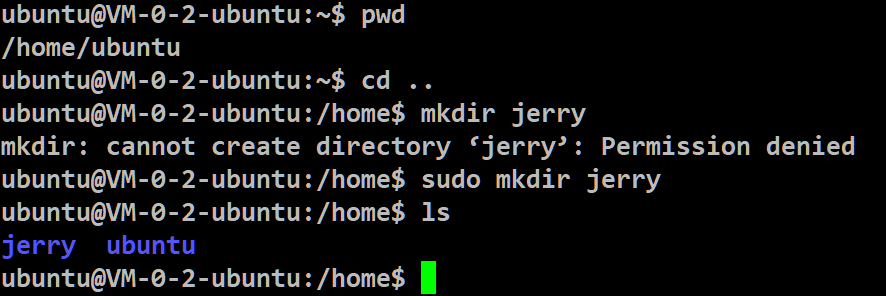








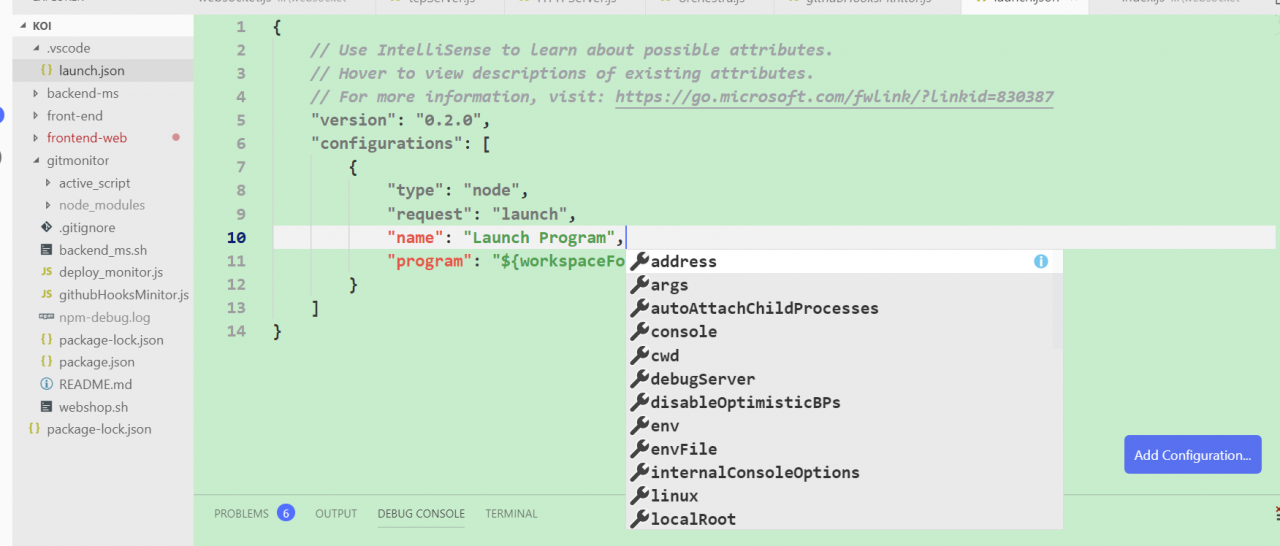
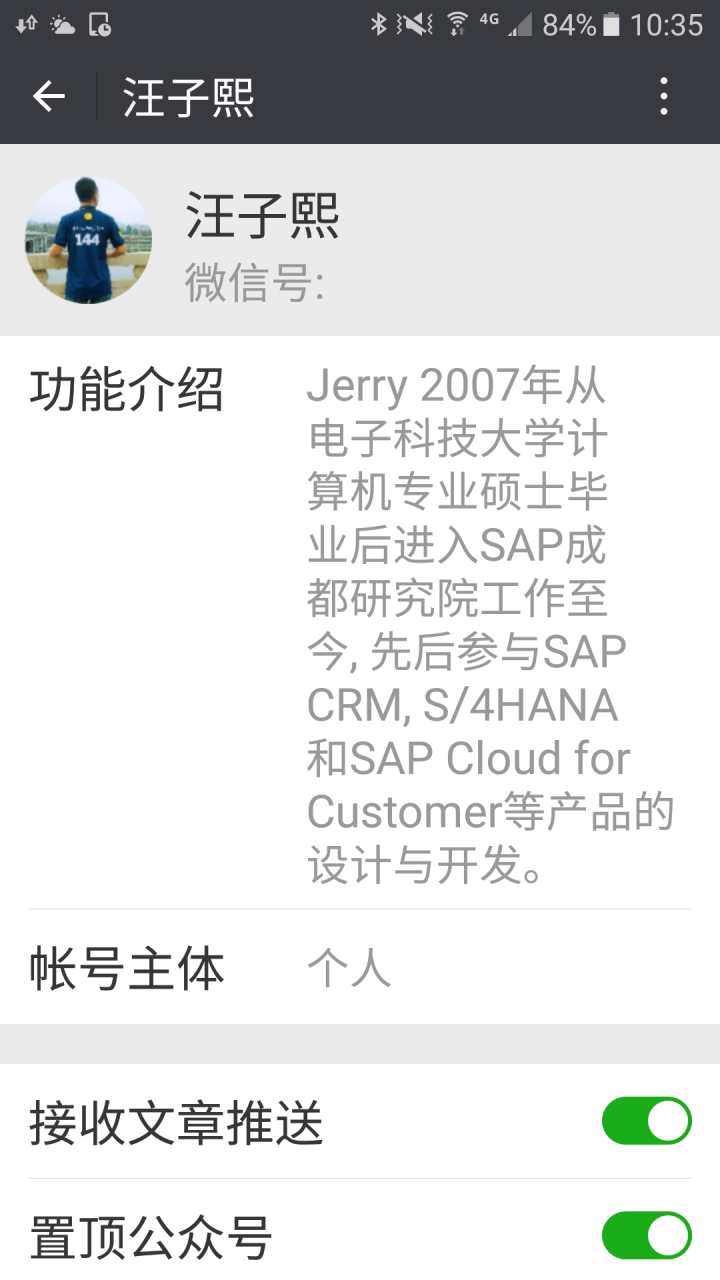
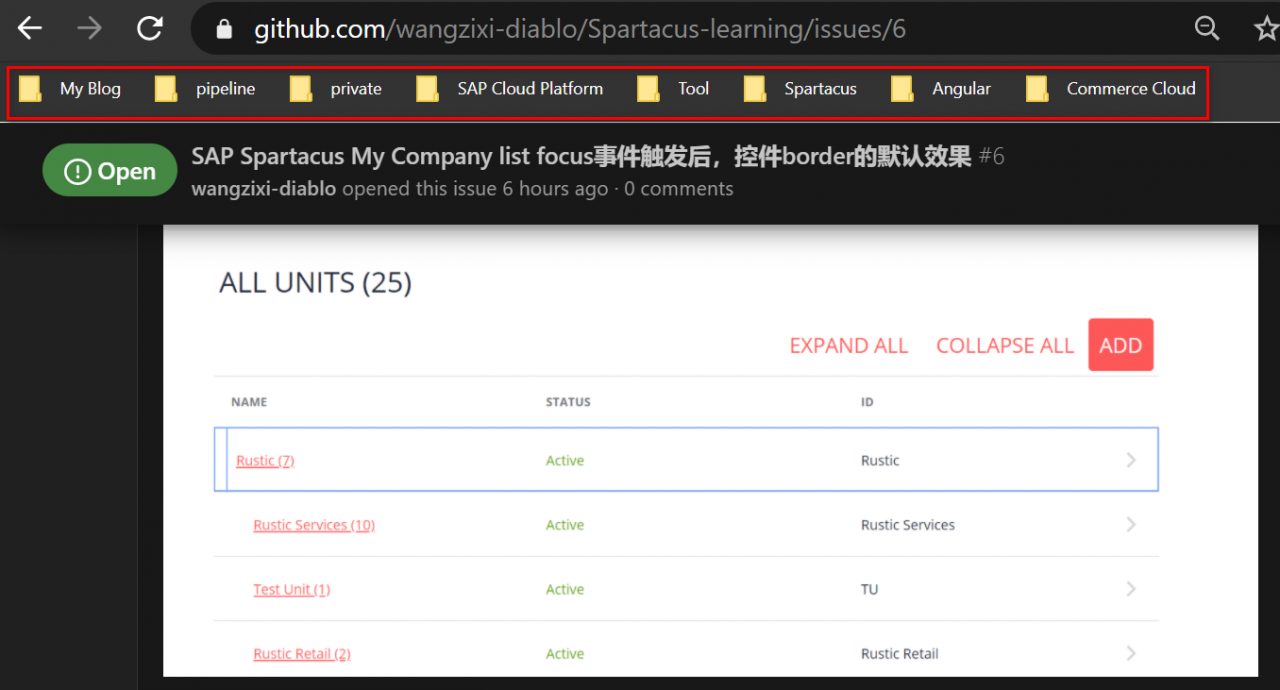

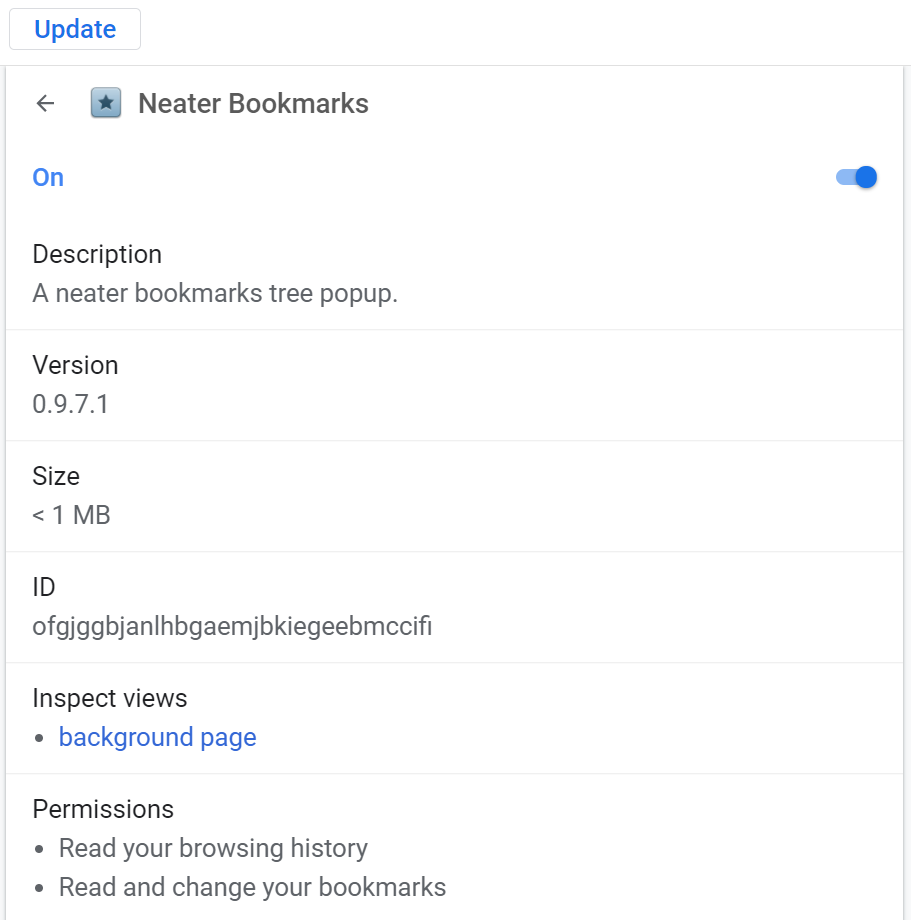
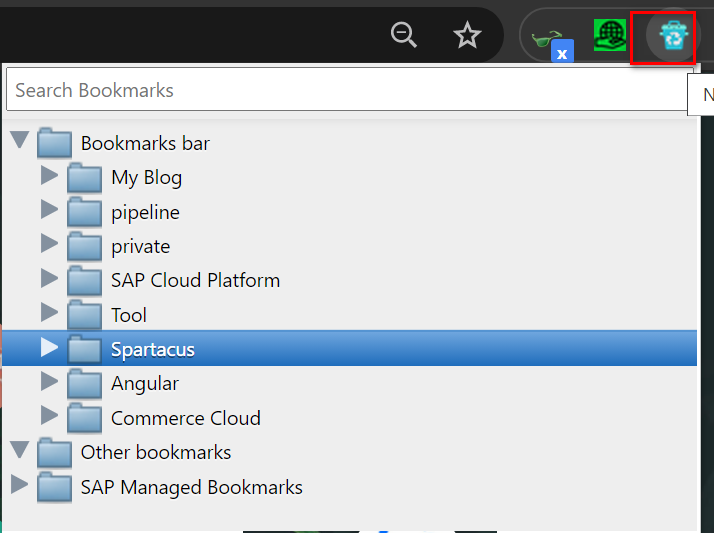



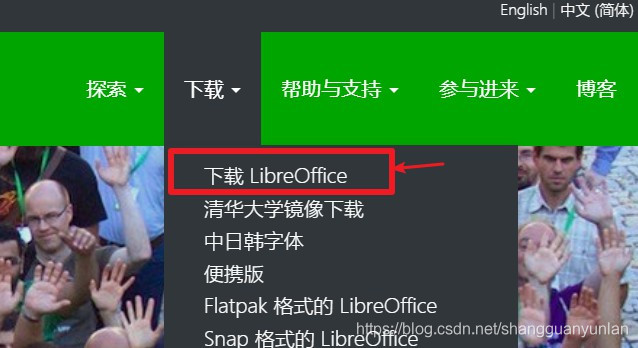
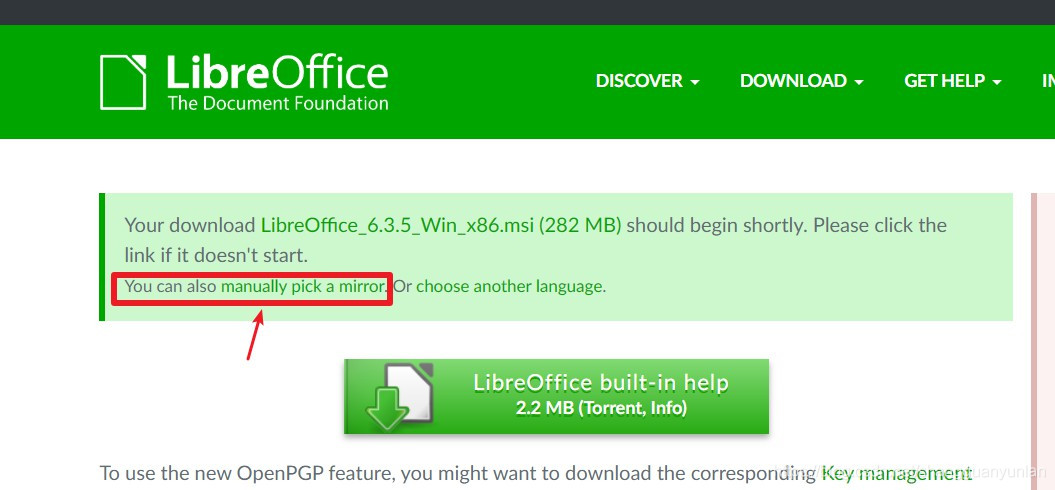
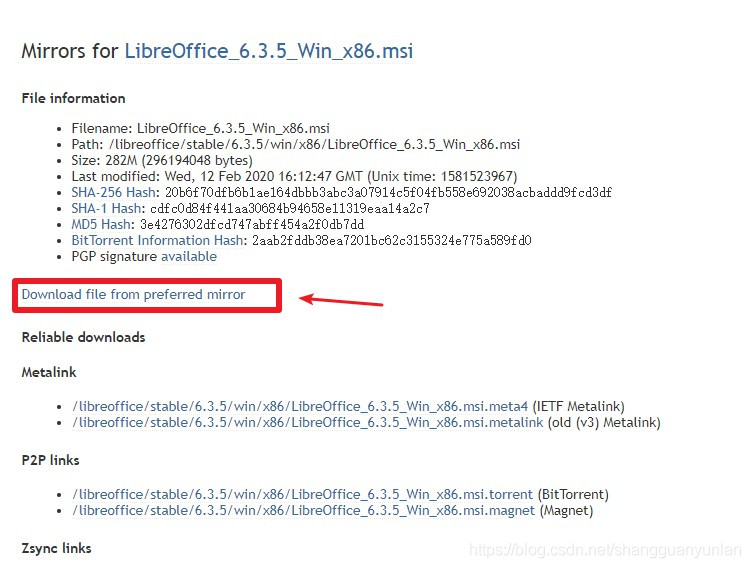 means
means